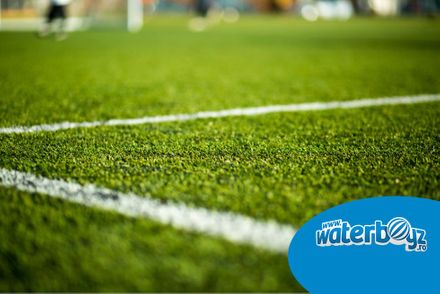5 Essential Tips for Maintaining Synthetic Football Turf
Administrators of synthetic football fields must ensure that periodic maintenance work is carried out on the surface to ensure users enjoy experiences that meet their expectations. Proper maintenance of such a field can be crucial for retaining the customer base of such a space.
Furthermore, caring for it contributes to maximizing its usage period. Although the specific texture of synthetic grass does not require irrigation, fertilization, or mowing, there are other maintenance solutions that are less costly but just as important. Here's how to take care of the synthetic turf on a football field, regardless of its size:
1. Brush the Entire Surface Every Two Days
Brushing the synthetic turf of a football field ensures a higher quality of play. This maintenance solution lifts the flattened grass and, secondarily, changes the direction of the fibers to avoid exposing only one side to the sun. Proper brushing of the synthetic field also aids in collecting other types of debris found on such sports fields: plant matter residues, paper and packaging, pebbles, etc. Neglecting brushing can result in a non-draining layer that encourages moss growth.
2. Redistribute and Level the Infill Material
Similar to natural grass football fields, synthetic turf filed can wear out more quickly in certain areas, such as goalmouths, corners, and the bench area. In these wear-prone spots, the infill material shifts from its original position, causing unsightly holes. This less-than-pleasing appearance isn't the only issue—game quality can be affected, and the risk of injury increases.
To maintain surface quality at an optimal level, monthly redistribution and leveling of the synthetic turf infill are necessary. This should be done in specific areas based on calculations of the turf's height or where holes are visible. Heavy rain can also cause this problem on synthetic fields.
3. Maintain Optimal Granule Levels
Artificial football grass has a fiber length of 50mm and includes a rubber granule substrate that cushions the contact between players and the playing surface. It's recommended to check the fill level once a year and, if necessary, add rubber granules to restore the optimal level. Additionally, every few years, partial or complete replacement of the infill layer may be needed. This process can be carried out using specialized machinery that can work up to 5cm deep in the synthetic turf layer and also contributes to its professional cleaning.
4. Quickly Remove Stains from the Turf
The synthetic material of such turf is 100% waterproof, but exposure to mud or other liquid substances could affect its quality. Moreover, an accumulation of stains on the football field's surface can lead to an unsightly appearance over time. Clients notice these details and may base their perception of cleanliness on the rented play area. Hence, stains of any kind should be removed as quickly as possible. To reduce the risk of staining, it's recommended to prohibit entry onto the field with pets, coffee, or other liquids that can cause staining.
5. Use Appropriate Footwear for Synthetic Turf
Using the right footwear prevents premature damage to the synthetic turf layer and should be mandatory for all users of the surface. Wearing cleats or studs designed for natural grass on synthetic turf, especially in areas where the turf is bonded, can cause entire sections to detach. When playing football on synthetic turf, using turf-specific cleats (TF) is essential. The design and sole material are ideal for the texture of synthetic turf, whether it's quartz sand or rubber granules. The TF (turf) cleat sole provides optimal traction and excellent cushioning when the foot makes contact with the surface.
Additional Tips for Maintaining Synthetic Football Turf
To ensure that the use of synthetic football turf lasts as long as possible and meets the manufacturer's quality guarantees, consider these additional tips:
- Avoid using cars or heavy machinery on the field.
- Do not keep bulky objects on the surface for extended periods.
- Do not discard lit cigarettes or other flammable products on the turf.
By following the maintenance tips and applying them at the recommended intervals, the turf will provide remarkable comfort for players, minimize the risk of injury, and contribute to a successful business centered around it.
Planning to venture into this domain? Learn why sports fields are a profitable business, the costs of setting up/administering such a space, and the types of sports fields you can establish with Waterboyz. We have numerous tailored solutions for you, so discover vital information for making an informed choice in this field.




































































































































